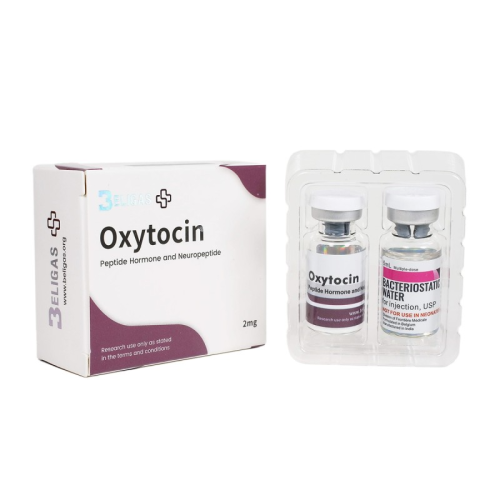ACNE
No
WATER RETENTION
No
HBR
No
HEPATOTOXICITY
No
AROMATIZATION
No
MANUFACTURER
Beligas
WAREHOUSE
International Warehouse 3
SUBSTANCE
Oxytocin
,
Oxytocin is a hormone produced in the posterior lobe of the pituitary gland, which is a small gland located at the base of the brain.
Often referred to as the "cuddle hormone" or "love hormone," oxytocin is released during social bonding activities, such as cuddling. Research published in the journal Hormones and Behavior in 2009 indicated that even interactions with pets, like playing with a dog, can trigger an increase in oxytocin levels. However, these labels may not fully capture the hormone's complexities.
Oxytocin can also heighten memories of negative bonding experiences, such as in situations where men have troubled relationships with their mothers. Its effects can make individuals more wary towards those they perceive as outsiders. Thus, whether oxytocin elicits feelings of affection or suspicion largely depends on the surrounding context.
Oxytocin in Women
Oxytocin plays a crucial role in women's health. According to Larry Young, a behavioral neuroscientist at Emory University, it is a peptide produced in the brain that is particularly recognized for its functions during childbirth and lactation. The hormone triggers uterine contractions during labor and aids in the uterus's recovery post-delivery. When a baby suckles at its mother's breast, this stimulation prompts the release of oxytocin, which signals the body to produce milk for feeding.
Moreover, oxytocin fosters the bond between mother and child. Research indicates that "female rats view their offspring as undesirable if they are virgins," Young explained. "However, after giving birth, their brains undergo changes that make the pups irresistible." Similar observations are evident in humans. A 2007 study in the journal Psychological Science determined that mothers with elevated oxytocin levels during their first trimester were more likely to engage in bonding activities such as singing or bathing their infants. Although maternal bonding is not strictly biologically determined—since women can adopt children and nurture them—there is evidence to suggest that oxytocin released during pregnancy plays a role in fostering attachment and connectedness to the baby. Additionally, interaction with an infant can enhance the infant's own oxytocin levels.
Oxytocin in Men
For men, oxytocin also facilitates bonding. A 2012 study demonstrated that fathers receiving oxytocin through a nasal spray interacted more closely with their 5-month-old babies compared to fathers who did not receive the hormone. It's worth noting that another hormone, vasopressin, is more influential in men's social bonding.
The seemingly contradictory social effects of oxytocin introduce complexity to its narrative. Research has shown that Dutch students administered olfactory oxytocin exhibited greater positivity towards fictional Dutch characters while displaying negative attitudes towards characters with Arab or German names. This suggests that oxytocin may enhance social bonding primarily with those perceived as part of one's in-group, as reported in a January 2011 study published in PNAS.
In a related study published in PNAS in 2010, men who received oxytocin and wrote about their mothers found an increase in positive descriptions of maternal care if their relationships were secure. Conversely, those with troubled relationships tended to view their mothers as less caring after the oxytocin administration. Researchers propose that the hormone may enhance the formation of social memories, emphasizing that it can strengthen existing associations, both positive and negative. According to Young, oxytocin makes social information more significant by connecting various brain areas involved in processing social cues, like sights, sounds, and smells, to the brain's reward centers.
Oxytocin Sprays and Side Effects
Some researchers have explored oxytocin sprays as potential treatments for autism, a disorder characterized by difficulties in social interaction. A small 2013 study published in PNAS tested oxytocin on children and teenagers with autism, who were asked to identify emotions from photographs of people's eyes. Although the participants did not show improvement in emotion recognition, there was heightened activity in brain regions linked to social interaction. This suggests that oxytocin could enhance the effects of behavioral therapies for children with autism.
"When considering the use of oxytocin for treating conditions like autism, it's crucial to ensure that the social context is positive," stated Young.
However, using oxytocin sprays outside of medical supervision is considerably less clear-cut. Over-the-counter sprays marketed online claim to alleviate stress and enhance social experiences but are not regulated by the FDA. Consequently, their effectiveness, potential side effects, and ingredient accuracy remain uncertain.
There have been no extensive studies examining the long-term effects of legitimate oxytocin sprays utilized in research; most investigations involve single doses of the hormone. Conversely, Pitocin, a synthetic form of oxytocin used intravenously to induce labor, can have side effects that include nausea, vomiting, and stomach discomfort.

